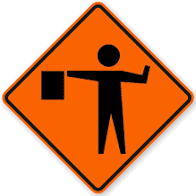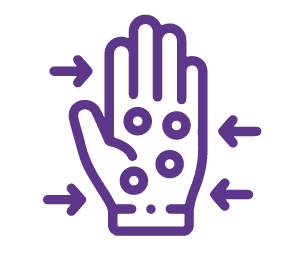New COVID Personal Guidelines
“The existence of more-transmissible viruses emphasizes the importance of us upping our game and doing not more of the same but better of the same.”
—Tom Frieden, former director of the Centers for Disease Control and Prevention.
Tom said it perfectly.
If we keep doing the safety cautions we were doing before, but the risk grows, we’ll be in trouble.
Here are the guidelines I’ve developed at my clinic and for my family to counter the increased risk. I hope that these will help you and your family to stay healthy.
Masks
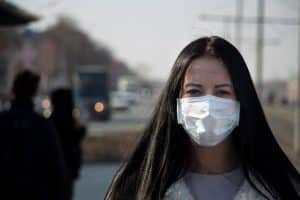
Medical-Grade Masks
Several European countries, including Germany, are now requiring people to wear medical-grade masks in public areas. The German state of Bavaria requires N95 respirators on public transport or in stores.
Dr. Anthony Fauci is now endorsing double-masking (wearing two face masks on top of each other).
Why? What the Heck?
In a word, VARIANTS. The B117 variant is a mutation of the COVID virus first found in Britain. It’s thought to be about 50% more transmissible and first appeared in Georgia in early January. Recently, this variant is increasing in Georgia in the Atlanta area. Nationally, COVID numbers have been trending downward in recent weeks, but the numbers are still higher than at any time earlier in the pandemic. The combination of high transmission rates and the possibility of the new variants means you need to up your game when it comes to safety.
Guide to Masks:
CLOTH MASK:
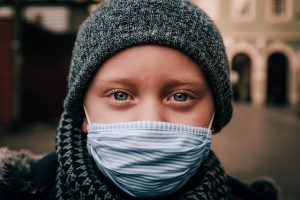
Protection: 26% – 80%. It mainly protects others from the wearer, but it does give minimum protection to the wearer.
.
SURGICAL MASK:
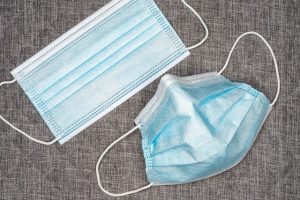
Protection: Generally, more than a cloth mask, but less than a respirator.
.
RESPIRATOR:

Protection: 95%. It uses an electrostatic filter to capture tiny particles, including viruses. This mask effectively protects the wearer as well as protecting others. The mask is made to seal around the face so that all air goes through the mask.
DOUBLE-MASKING:

- Wearing a decorative “stylish” cloth mask over a respirator (N95 or KN95). This adds a small amount of protection and can help you coordinate that outfit!
- Wear a surgical mask with a cloth mask on top. This can effectively increase your protection AS LONG AS it doesn’t cause more air leakage around the edges of the mask. Make sure the masks fit well.
- Wear a surgical mask on top of your respirator. This adds significantly to your protection and is a good idea if you must spend long periods in a closed space (airplanes, schools, offices, stores, etc.).
Mask Comfort?
Respirators are not as comfortable as cloth masks, but they’re easy to get used to. I’m logging a good six to eight hours a day wearing one, so I speak from experience. The mask is semi-rigid and doesn’t get in your mouth when you talk the way cloth masks can. It seals around your cheeks, nose, and chin so that all the air you breathe in and out passes through the mask (a beard will prevent this seal in most cases).
I feel so much more protected and safe when I have to go into a public building if I’m wearing this mask.
When to Wear a Mask?
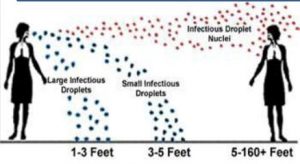
Wear a mask inside any building with at least one other person or in an empty building that had people in it within the past few hours.
Outside, you should wear a mask if there are many people, or if you will have to spend time close to another person.
In a car with another person: wear a mask and keep the windows down as far as possible. Sit as far from the other person as the seating permits.
Exposure
Preventing yourself from becoming infected with COVID is mainly a matter of controlling your exposure. Think of exposure as a scale:
Zero exposure = staying under your bed.
Maximum exposure (let’s call this a “10”) = a COVID ward in a hospital wearing no PPE.
There’s lots of room in between these extremes. On this scale, you want to plan to stay in the zero to three range.
Exposure Factors
Out of these, the most likely to infect you are droplets and aerosol particles. You get infected with COVID mainly by breathing in virus particles or by getting them into your eyes. This can happen from airborne droplets, from aerosol particles (particles small enough to stay floating in the air indefinitely), and from transferring virus particles from your hands to your face or eyes.
Your risk from these is proportional to the number of particles and the number of minutes you are exposed to those particles.
Your risk of touching an infected surface and transferring the virus to your face or eyes is proportional to the number of surfaces you touch and the length of time between handwashing and hand sanitizing.
Number of People
In Cobb County, Georgia right now, a group of 10 people has up to a 25% chance of including at least one COVID-positive member. Move the number in the group up to 25, and the chance goes as high as 50%. With 100 people, your risk is 75% to 100%. (Georgia Tech COVID-19 Event Risk Assessment Planning Tool).
Grocery Shopping:

Saturday is the most popular grocery shopping day.
Any large grocery will likely have 100+ shoppers and employees at any given time in the building.
CONCLUSION: Any trip to a grocery store, you could be physically close to a COVID-infected person, possibly multiple times.
SOLUTION:
- Shop online and have the groceries brought to the parking lot or delivered.
- Shop at off-peak hours (early in the morning, for example) and keep the trip as short as possible. Go shopping twice for 15 minutes each rather than one 30-minute trip.
Restaurants:
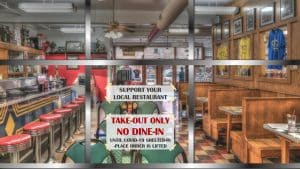
SOLUTION: Love your local restaurant with carry-out or meal delivery, but indoor dining is one of the most dangerous things you can do right now. Curbside delivery, UBER Eats, DoorDash, etc. Stay away from the risky parts of a restaurant, and you’re good! (The “risky part” is the inside).
.
Visiting:
We all need to do a lot of this during the pandemic to keep each other sane.
SOLUTION: Avoid indoor gatherings. Avoid large outdoor gatherings.
- Phone, text, email, video calls.
- Meet in person outside, with masks and six feet apart.
- Inside events need wide-open windows, fans in every room, well-fitted masks on everyone, very limited number of people, and distancing. This still produces a significant risk, especially right now.
Personal & Family Guidelines and Policies
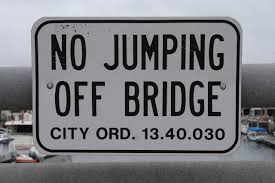
Don’t get complacent. Check temperatures and ask questions of everyone every day. “How do you feel?” Treat headaches, digestive upsets, or tiredness with suspicion. If it doesn’t resolve quickly or gets worse, it’s COVID test time.
Boost everyone’s immune system daily with Vitamin C 500mg, Zinc 30 mg, and Vitamin D 200 mg. Get sugary foods and drinks out of the house. Fresh veggies, fruits, and good protein should be everyone’s diet, no fast or junk foods.
Keep hand sanitizer in each car.
Remind everyone to wash their hands a lot. After restroom use, before meals, after getting out of the car, after using the computer (keyboards are among the dirtiest surfaces in your house with the possible exception of your phone. Wipe both frequently).
Everyone should do daily exercise, walking, motion. There are online classes for yoga, Pilates, workouts, etc.
Ration the TV and internet browsing time. Doom-scrolling won’t improve your health.
Do creative things with the time you steal from TV and the internet. Plant a garden, practice a musical instrument, write, work in your yard or house, build models, play online chess.
Keep track! Post a chart on the fridge for everyone to mark their daily accomplishments. Then have some reward for a perfect week!
EXAMPLE:
-
- Exercised
- Slept 8 hours
- Self-Care (did something for myself)
- Creative (art, music, writing, gardening, etc.)
- Avoided stressful media and people
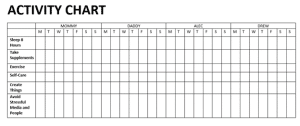
Conclusion
We can do this! Stay vigilant. Stay strong. Stay safe.
As my grandma used to say, “This too shall pass.” Let’s get out the other side with our health intact.
You can do so many things outside safely like hiking, walking and meeting a friend. With some creativity and smart thinking we can still enjoy life but keep ourselves, our friends and our neighbors safe!
If You Have a Chronic Illness
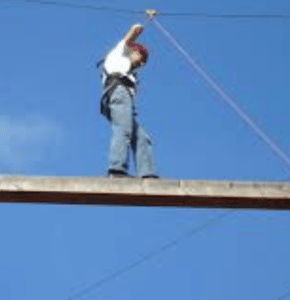
With COVID, everyone else is walking a balance beam that’s six inches off the ground. If they slip, it’s usually recoverable. With your health condition, you are walking a balance beam that’s 20 feet off the ground. Slipping will have dire consequences.
There are solutions, however, to live without stress and worry.
“Last week, when I had COVID, I thought I was going to die. It was terrible, but I made it through. I am certain that if I had not been on a health program with Dr. Billiot for the past year, I would never have survived.” –Current Patient
The Evidence (If you have a chronic illness, this part is very applicable to you)
To date, the US has had about 25% of all COVID deaths worldwide, even though we have just 4% of the world’s population.
Something is seriously amiss.
A clue to this appeared in a Lancet article by three Johns Hopkins physicians linking overweight to more severe COVID cases.
The CDC has published an entire chart of pre-existing conditions that worsen COVID cases, ranging from kidney disease to diabetes.
It would seem that the disparity of deaths in the US is linked to the fact that we are less healthy than many other countries.
You can’t fix the US lifestyle and health problems, BUT…
You CAN do something about your health.
You can do something even if your doctor has told you that you are a “diabetic” and will always be a diabetic. Even if you’ve been told you will be on (hypertension / thyroid / heart / antidepressants / etc.) drugs for the rest of your life.
BUT there is no magic bullet or one-size-fits-all solution. What you need to do is different from everyone else. But it CAN BE DONE, and you CAN BE MUCH HEALTHIER.
Here is where to get started:
Click the button and fill out the secure online form. Tell Dr. Billiot about your health problems. We’ll set up a free phone consultation with the doctor for you. You can discover what you’d have to do to start improving your health and possibly getting off medications.
CLICK THE BUTTON, FILL OUT THE FORM
You can feel AND BE healthier, safer, and more confident of your future.
Blog Subscription
Get Great Information about your Health
- Weekly blog posts with vital tips and warnings
- Interesting “pass it along” health facts
- Cutting edge natural healing techniques and advice

Watch this video for a seven-minute explanation of how your body can be assisted to heal itself.

